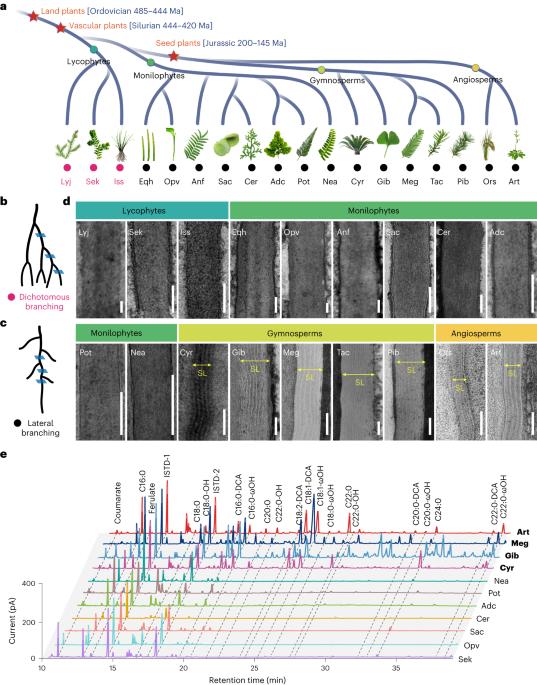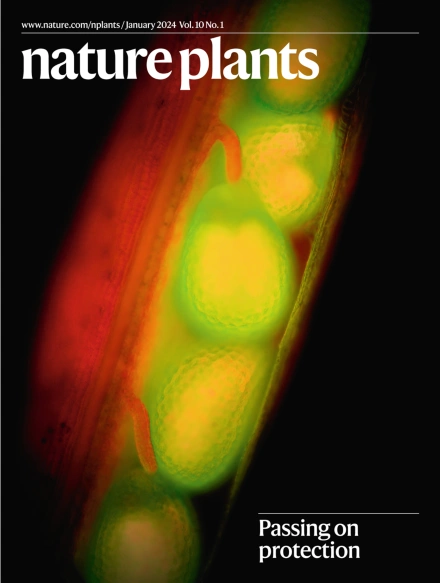根木栓素片层的进化创新促成了种子植物的兴起。
IF 15.8
1区 生物学
Q1 PLANT SCIENCES
引用次数: 0
摘要
石炭纪晚期,气候变得更冷、更干燥,种子植物取代蕨类植物成为优势植物群1,2。然而,推动种子植物成功的具体创新尚不清楚。在这里,我们报道木栓蛋白片层(SL)的出现有助于种子植物的生长。我们发现,卡斯帕尼带和SL维管屏障在不同的时间进化,前者起源于维管植物的最新共同祖先(MRCA),后者起源于种子植物的MRCA。我们的研究结果进一步表明,木栓素形成所需的大多数基因是通过种子植物MRCA中的基因复制产生的。我们发现SL在种子植物的MRCA中的出现通过防止中柱的水分损失来增强耐旱性。我们假设SL在干旱环境中比蕨类植物具有决定性的选择性优势,导致蕨类植物的减少和裸子植物的兴起。这项研究为种子植物的进化成功提供了见解,并对工程耐旱作物或蕨类植物品种具有启示。本文章由计算机程序翻译,如有差异,请以英文原文为准。

The evolutionary innovation of root suberin lamellae contributed to the rise of seed plants
Seed plants overtook ferns to become the dominant plant group during the late Carboniferous, a period in which the climate became colder and dryer1,2. However, the specific innovations driving the success of seed plants are not clear. Here we report that the appearance of suberin lamellae (SL) contributed to the rise of seed plants. We show that the Casparian strip and SL vascular barriers evolved at different times, with the former originating in the most recent common ancestor (MRCA) of vascular plants and the latter in the MRCA of seed plants. Our results further suggest that most of the genes required for suberin formation arose through gene duplication in the MRCA of seed plants. We show that the appearance of the SL in the MRCA of seed plants enhanced drought tolerance through preventing water loss from the stele. We hypothesize that SL provide a decisive selective advantage over ferns in arid environments, resulting in the decline of ferns and the rise of gymnosperms. This study provides insights into the evolutionary success of seed plants and has implications for engineering drought-tolerant crops or fern varieties. This study reports the striking discovery that a water-impermeable barrier known as suberin lamellae was first evolved in the common ancestor of seed plants and contributed to their evolutionary success.
求助全文
通过发布文献求助,成功后即可免费获取论文全文。
去求助
来源期刊

Nature Plants
PLANT SCIENCES-
CiteScore
25.30
自引率
2.20%
发文量
196
期刊介绍:
Nature Plants is an online-only, monthly journal publishing the best research on plants — from their evolution, development, metabolism and environmental interactions to their societal significance.
 求助内容:
求助内容: 应助结果提醒方式:
应助结果提醒方式:


